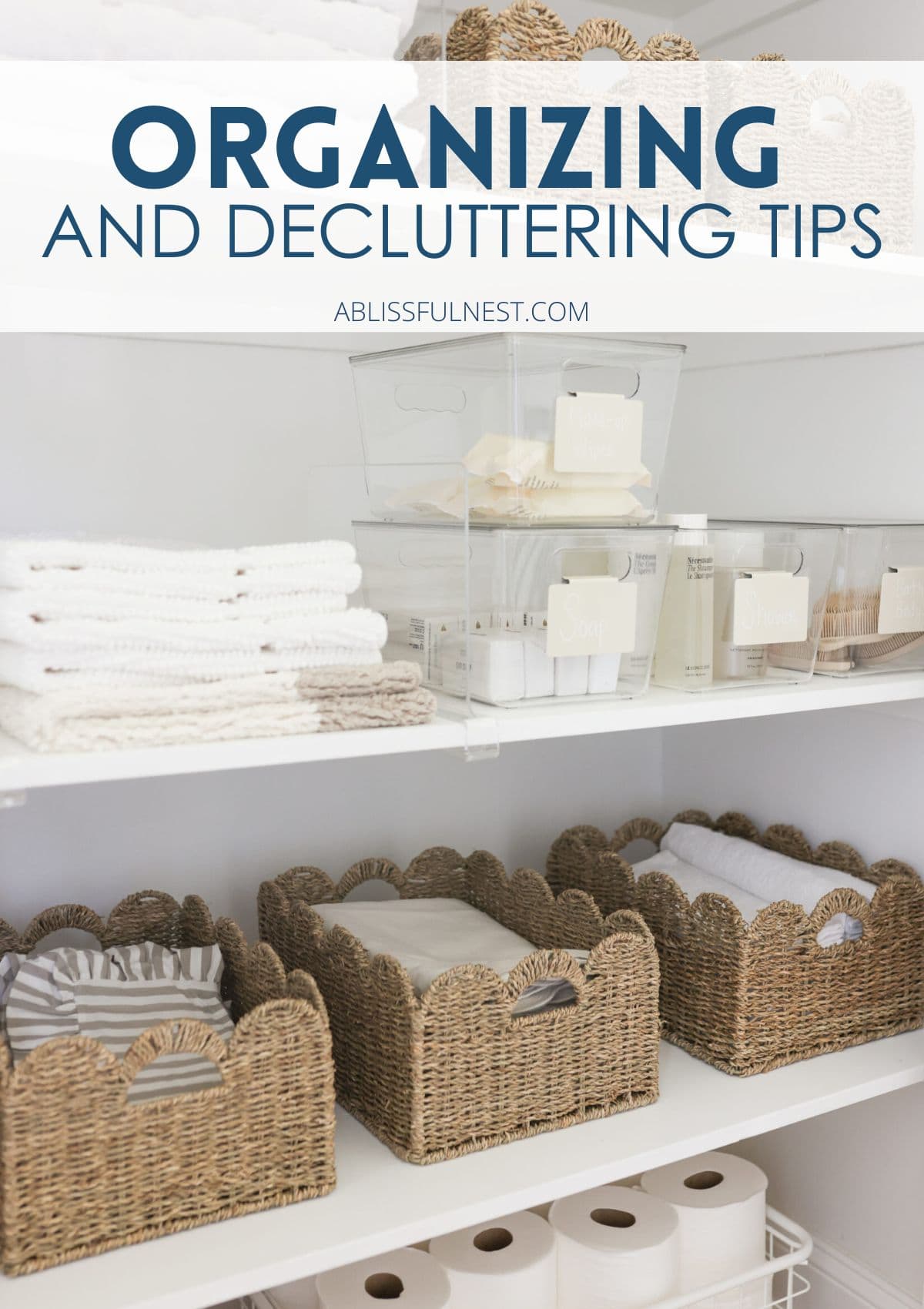10 Practical Steps to Start Decluttering Your Home

The Importance of Decluttering
Living in a cluttered environment can lead to feelings of anxiety and chaos. According to a study published in the journal “Personality and Social Psychology Bulletin,” disorganized spaces can heighten stress levels and have a negative impact on an individual’s mental health. In contrast, a decluttered space promotes a sense of calm and can even enhance creativity and focus. Achieving an organized home not only reflects a more positive mental state but also fosters productivity in everyday tasks.
Let’s delve deeper into the benefits of decluttering your home:
- Improved Mental Clarity: An orderly environment allows for greater focus. When your physical space is organized, it frees up mental energy, enabling a clearer thought process and enhanced creativity. This can be particularly beneficial for those working from home or engaged in creative pursuits, as a tidy workspace encourages innovative thinking.
- Better Productivity: A decluttered area significantly reduces distractions. This is especially relevant for families and professionals who juggle multiple responsibilities. A study by the Princeton University Neuroscience Institute highlighted that the brain’s processing efficiency drops when faced with excess stimuli, such as clutter. Organizing your belongings can lead to more efficient use of your time, allowing you to accomplish tasks more rapidly.
- Enhanced Aesthetics: A well-organized home is not just practical; it’s also visually appealing. When your living space is tidy, it invites relaxation and comfort. Homes with minimal clutter can appear more spacious, inviting, and tailored, creating a warm atmosphere for both residents and guests alike.
Beginning the decluttering process can feel like a daunting task, especially if you have accumulated items over many years. However, by implementing a systematic approach, you can approach this challenge with confidence. Rather than trying to tackle every room at once, focus on manageable areas or categories. For instance, consider starting with a single drawer, closet, or even a specific type of item such as shoes or books. This method not only simplifies the process but gives you a sense of accomplishment as you complete each section.
Moreover, embracing the ethos of minimalism can lead to sustainable changes in your living habits. By valuing quality over quantity, you can make more intentional decisions about what items to keep, ensuring they contribute to your overall happiness and functionality of your home. In the upcoming sections, we will outline 10 practical steps that will support you in your decluttering journey, regardless of your living situation.
By prioritizing decluttering, you are not just cleaning your home; you are investing in your mental and emotional well-being. Take the leap and transform your space into a serene haven where you can thrive. Your journey to a more organized life starts now.

DISCOVER MORE: Click here to find out how
Establishing a Decluttering Mindset
Before diving into the practical steps to decluttering your home, it’s essential to cultivate the right mindset. Understanding that decluttering is not merely about getting rid of items, but rather about creating a space that enhances your life is crucial. By embracing this perspective, you can approach each room and item with a sense of purpose, making the process more meaningful and sustainable.
Start by asking yourself a series of thought-provoking questions that can aid in the decision-making process:
- What do I truly need? Consider what items are essential for your daily life and well-being. Hold on to the things that add value rather than simply taking up space.
- Does this item bring me joy? Inspired by Marie Kondo’s popular method, this question helps you evaluate your belongings based on their emotional significance.
- When was the last time I used this? If you haven’t utilized something in the past year, it might be time to reconsider its place in your home.
- Am I keeping this out of guilt or obligation? Items may inadvertently remind you of someone or something, leading to clutter. Letting go doesn’t mean you forget; it just means making space for what truly matters.
Once you’ve established a decluttering mindset, it’s important to set clear goals for your decluttering journey. Aim for achievable, realistic objectives to prevent feeling overwhelmed. Perhaps designate specific time frames for each area of your home or goal to tackle one room a week. Establishing timelines can help create a sense of urgency while also providing necessary structure.
Start Small for Big Impact
When you’re ready to take action, consider beginning with small, contained spaces. Tackle a single drawer or a closet to get a feel for the decluttering process. This can instill confidence and motivate you to continue. Celebrating small victories can significantly enhance your overall momentum.
Another effective strategy is utilizing the four-box method, which involves sorting your items into four categories:
- Keep: Items that are essential or cherished should go into this box.
- Donate: Gently-used items that can benefit others are placed here.
- Trash: Broken or unusable items should be discarded for good.
- Relocate: Items that belong in another room can be placed in this box for later returning.
This approach not only simplifies the decision-making process but also encourages immediate action. By categorizing your belongings, you will quickly see the impact of your effort and visualize the decluttering progress you’ve made. As you continue to chip away at clutter, remember that it’s a journey toward a more organized and peaceful living space.
As your decluttering journey unfolds, you will find that **every small decision contributes to a larger transformation** of your home. The next sections will explore additional practical steps you can take to effectively start decluttering your home, paving the way for a more balanced and fulfilling living environment.
| Advantage | Explanation |
|---|---|
| Enhanced Space | Decluttering maximizes your available space, creating a more open and inviting home environment. |
| Reduced Stress | A cleaner, more organized space can lead to lower anxiety levels, creating a peaceful atmosphere. |
| Improved Focus | Less clutter allows for enhanced concentration on tasks, promoting productivity. |
| Increased Value | A clutter-free home can increase the marketability and value of your property. |
Incorporating these advantages into your decluttering process not only enhances your living space but also optimizes your overall lifestyle. Creating a serene environment can ultimately transform your daily tasks and improve your mental well-being. By taking the time to declutter, you are investing in a structured and organized life, leading to a more fulfilling experience at home. Each step you take towards decluttering will propel you further into a motivated and inspired way of living. This post will continue to provide you with practical steps to help you navigate your decluttering journey effectively.
DISCOVER MORE: Click here to streamline your devices
Developing a Systematic Approach
Once you’ve mentally prepared for decluttering and started taking small steps, the next phase involves developing a systematic approach that keeps you on track. The key is consistency; a structured routine can help you maintain the momentum you’ve built. To ensure you stay organized, consider setting aside specific times each week dedicated solely to the decluttering process.
Choose a Schedule that Works for You
One effective strategy is to carve out 15 to 30 minutes daily dedicated to decluttering a specific area. By focusing on short, manageable segments, you’ll find that decluttering becomes less daunting. For instance, you might prioritize weekdays for smaller tasks and reserve weekends for tackling larger projects, such as a garage or basement. However, if you’re pressed for time, selecting a single day each month for a bigger declutter session can also be beneficial.
Set Decluttering Challenges
Engaging in decluttering challenges can add a fun and competitive twist to your journey. You might, for example, challenge yourself to remove a specific number of items each week, such as 27 items in 27 days. This simple yet effective goal can keep your spirits high and maintain your enthusiasm for decluttering. Consider involving family members or friends in these challenges to create a supportive environment that encourages collective efforts.
Evaluate One Zone at a Time
When moving through your home, it’s helpful to focus on one zone at a time. Whether it’s a room, a section of a room, or a specific type of item, concentrating your efforts allows for a deeper analysis of what you truly need. By doing so, you can avoid the overwhelming feeling that can arise from trying to address multiple areas simultaneously.
Room-by-Room Breakdown
Consider a room-by-room breakdown for a methodical approach. For example:
- Kitchen: Start with cabinets and drawers, clearing out expired items, unused appliances, and duplicate gadgets.
- Living Room: Identify decor items, remotes, and books. Create a designated space for tech accessories to prevent clutter.
- Bedroom: Focus on clothing and bedding. Assess your wardrobe for items that haven’t been worn in over a year.
- Bathroom: Check your medicine cabinet and vanity for expired products or items that you no longer use.
- Garage: Set up categories for tools, seasonal decorations, and sports equipment to keep everything organized.
By breaking down these tasks into manageable sections, the idea of decluttering becomes less intimidating, and completion of each zone fosters a sense of accomplishment.
Utilize Technology to Stay Organized
In this digital age, technology can aid in your decluttering journey. Consider using apps designed to promote organization and minimize clutter. Applications that help you catalog your belongings or track items you’ve donated can be especially useful. For example, utilizing a digital note-taking app can assist in creating lists of items you wish to keep or donate, making it easier to visualize progress and maintain focus.
Staying consistent, setting realistic goals, and creating an organized plan will transform your decluttering effort from merely a chore into an enriching experience. With each item you evaluate and decision you make, you will be one step closer to a harmonious living environment that enhances your quality of life.
DISCOVER MORE: Click here to find out how
Conclusion
In summary, embarking on the journey to declutter your home can seem overwhelming, but by following these 10 practical steps, you can create a serene and organized living space that promotes wellbeing and productivity. Starting with mental preparation lays the groundwork for a successful decluttering experience. Setting clear goals and creating a structured routine ensures that your efforts remain consistent, transforming the process from a daunting task into an engaging, goal-oriented activity.
Adopting a room-by-room approach allows you to tackle specific areas without getting bogged down by the vastness of the project. Utilizing technology enhances your organization, helping you maintain focus and track your progress effectively. Whether you engage in solo tasks or involve family and friends, fostering a sense of community around decluttering adds motivation and enjoyment to the process.
As you progress through your decluttering journey, remember that every step forward represents a move towards a more harmonious living environment. It is not merely about discarding unwanted items; it’s also about making mindful choices that reflect your values and lifestyle. If you find yourself struggling, reassess your methods and adjust your strategy as needed. The ultimate goal is to create a space that feels welcoming and functional.
So grab those sorting bins, set some time aside in your schedule, and begin uncovering the beauty of an uncluttered home. With effort and perseverance, you’ll not only declutter but also redefine your relationship with your belongings, ultimately leading to a more peaceful and enjoyable living atmosphere.


